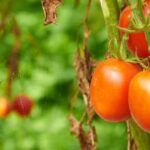Are you interested in starting your own vegetable garden but don’t know where to begin? Understanding the basics of vegetable gardening is crucial for a successful and bountiful harvest. From choosing the right vegetables for your garden to understanding seasonal planting and harvesting, there are several factors to consider. One important tool that can help you stay organized and on track is a vegetable gardening chart.
When it comes to vegetable gardening, it’s important to start with the fundamentals. Knowing which vegetables thrive in your specific climate and soil conditions is essential for a successful harvest. Additionally, understanding the best times for planting and harvesting each vegetable will maximize your yield.
Creating a vegetable gardening chart can be a valuable resource when planning, organizing, and maintaining your garden. It allows you to keep track of important details such as plant varieties, planting dates, expected harvest times, and any issues or successes you encounter along the way. In this article, we’ll delve into the key components of a comprehensive vegetable gardening chart and how it can help streamline the gardening process.
Choosing the Right Vegetables for Your Garden
When it comes to choosing the right vegetables for your garden, it’s important to consider your local climate and growing conditions. Some vegetables thrive in cooler temperatures, while others prefer the heat. Understanding the specific needs of each vegetable will help you make informed choices for your garden.
One way to determine which vegetables are best suited for your area is to consult a vegetable gardening chart. These charts provide valuable information on each vegetable, including optimal planting and harvesting times, ideal soil conditions, and sunlight requirements. By using a vegetable gardening chart, you can plan out your garden with precision and maximize its productivity.
Another factor to consider when choosing vegetables for your garden is your own dietary preferences and cooking habits. If you enjoy fresh salads, you may want to prioritize leafy greens like lettuce and spinach. For those who love to cook with fresh herbs, planting basil, thyme, and rosemary could be a great choice. Tailoring your vegetable selection to match your culinary interests will ensure that you have an abundant supply of ingredients right outside your door.
In addition to personal preferences, it’s also important to consider the amount of space available in your garden. Some vegetables require more room to spread out, such as zucchini and squash, while others can be grown in containers or small plots, such as tomatoes and peppers. Considering the size of each plant at maturity will help you plan out the layout of your garden effectively.
| Vegetable | Optimal Planting Time | Ideal Soil Conditions | Sunlight Requirements |
|---|---|---|---|
| Lettuce | Early spring or early fall | Well-drained soil with organic matter | Partial shade or full sun |
| Zucchini | Late spring after last frost date | Fertile and well-drained soil | Full sun |
Understanding Seasonal Planting and Harvesting
When it comes to vegetable gardening, understanding seasonal planting and harvesting is essential for a successful and fruitful garden. Different vegetables have specific planting and harvesting times, which vary depending on the climate and location. By following a vegetable gardening chart, you can keep track of when to plant each crop and when to expect a bountiful harvest.
In general, cool-season vegetables such as lettuce, spinach, carrots, and radishes are best planted in early spring or late summer for a fall harvest. On the other hand, warm-season vegetables like tomatoes, peppers, cucumbers, and squash thrive in the heat of summer and should be planted after the last frost date. By aligning your plantings with the appropriate season, you can ensure that your vegetables grow and produce optimally.
It’s important to note that seasonal planting also includes taking into account the length of time it takes for each vegetable to reach maturity. For example, some varieties of carrots may take 70-80 days to mature from seed to harvest, while certain types of lettuce can be harvested within 30 days. This information should be included in your vegetable gardening chart to help you plan accordingly.
| Vegetable | Planting Time | Days to Maturity | Harvest Time |
|---|---|---|---|
| Lettuce (Butterhead) | Early Spring/ Late Summer | 45-55 days | Spring/Fall |
| Tomatoes | After Last Frost Date | 60-85 days | Summer/Fall |
By having this information readily available in your vegetable gardening chart, you can effectively plan your plantings throughout the seasons and optimize your garden’s productivity.
Creating and Maintaining a Vegetable Gardening Chart
To begin creating your vegetable gardening chart, it’s important to first take into consideration the specific vegetables you plan to grow in your garden. Different plants have different requirements in terms of sunlight, water, soil type, and spacing. By understanding these needs, you can organize your chart by grouping together vegetables with similar growing conditions. This will help you plan where to plant each type of vegetable and create an efficient layout for your garden.
Once you have determined which vegetables to plant and have organized them into groups based on their growing conditions, it’s time to create the actual chart. You can use a simple grid system or spreadsheet to plot out the planting schedule for each vegetable.
Include columns for the plant name, date of planting, expected harvest date, and any additional notes or reminders. By keeping this chart updated throughout the growing season with any changes or observations, you’ll be able to stay on top of maintenance tasks and anticipate when each crop will be ready for harvest.
By maintaining a comprehensive vegetable gardening chart, you can effectively plan and manage your garden throughout the entire growing season. This tool not only helps with organization but also allows for better decision making when it comes to planting succession crops or rotating different vegetables in subsequent seasons. Whether you are a novice or experienced gardener, having a well-designed gardening chart can make all the difference in ensuring a successful and bountiful harvest from your vegetable garden.
Proper Soil Preparation and Fertilization
When it comes to successful vegetable gardening, proper soil preparation and fertilization are essential for healthy plant growth and abundant harvests. The right soil composition provides the necessary nutrients for the plants to thrive, while fertilization supplements these nutrients to ensure optimal growth. Here are some important tips for proper soil preparation and fertilization in your vegetable garden:
- Test your soil: Before planting, it’s crucial to test your soil to determine its pH level and nutrient content. You can purchase a DIY soil testing kit or send a sample to a professional lab for analysis. This will help you understand what your soil needs and how to best prepare it for planting.
- Amend the soil: Based on the results of your soil test, you may need to amend your soil with organic matter such as compost, well-rotted manure, or peat moss. These amendments improve the texture and fertility of the soil, providing a better environment for plant roots to grow and absorb nutrients.
- Fertilize appropriately: Once your garden is planted, it’s important to fertilize according to the specific needs of your vegetables. Different plants have different requirements, so be sure to use a fertilizer that is suitable for the types of vegetables you are growing. Follow package instructions carefully to avoid over-fertilizing, which can harm plants and contribute to water pollution.
By following these guidelines for proper soil preparation and fertilization, you can create an ideal growing environment for your vegetables, leading to healthy plants and bountiful harvests.
Whether you are just starting out in vegetable gardening or looking to improve your current practices, creating a vegetable gardening chart can be an invaluable tool. This chart will help you keep track of important information such as planting dates, varieties planted, fertilizer applications, watering schedule, and harvest dates. By compiling this information in one place, you can better plan and manage your garden throughout the season.
Creating a Vegetable Gardening Chart:
- Choose a format: You can create a simple chart using pen and paper or opt for a digital spreadsheet on your computer or smartphone.
- Include essential details: Your chart should include columns for key information such as vegetable variety, planting date, expected harvest date, fertilization schedule, pest management notes, etc.
- Maintain consistency: Update your gardening chart regularly with new information as the season progresses. This will provide insight into what works well in your garden and what adjustments can be made next season.
Incorporating a vegetable gardening chart into your gardening routine not only helps with organization but also serves as a valuable reference tool year after year.
Pest and Disease Management in Vegetable Gardens
Identifying Common Pests and Diseases
One of the key challenges in vegetable gardening is dealing with pests and diseases that can damage or even destroy your crops. Some common pests to watch out for include aphids, caterpillars, and stink bugs, while common diseases include powdery mildew, blight, and rot. It’s important to be able to identify these issues early on so that you can take appropriate action to prevent them from spreading.
Organic Pest and Disease Control
Many gardeners prefer to use organic methods to control pests and diseases in their vegetable gardens. This can include using natural predators such as ladybugs or lacewings to eat aphids, or rotating crops to prevent the buildup of disease-causing organisms in the soil. There are also organic sprays and treatments available that can help manage pest and disease problems without the need for harsh chemicals.
Integrated Pest Management (IPM)
Another effective approach to pest and disease management is integrated pest management (IPM), which involves using a combination of techniques to keep pest populations at manageable levels. This may involve practices such as physical barriers, traps, and carefully timed plantings to disrupt pest life cycles. By taking a holistic approach to managing pests and diseases, gardeners can minimize the use of pesticides while still protecting their crops.
By being proactive about identifying potential issues and implementing appropriate control measures, you can help keep your vegetable garden healthy and productive throughout the growing season. A well-maintained vegetable gardening chart can also be a helpful tool for tracking any pest or disease problems that arise and monitoring how different control methods are working.
Tips for Maximizing Yield and Growth
Choosing the Right Plant Varieties
When aiming to maximize yield and growth in your vegetable garden, it’s important to choose the right plant varieties for your specific climate and soil conditions. Certain vegetables may thrive better in your region than others, so it’s essential to do some research or consult with a local gardening expert before making your selection. Look for vegetable varieties that are known for their high-yield potential and resilience to common pests and diseases in your area.
Proper Spacing and Planting Techniques
One of the key factors in maximizing yield in a vegetable garden is proper spacing and planting techniques. Overcrowding plants can lead to competition for nutrients, sunlight, and water, resulting in stunted growth and lower yields. Be sure to follow recommended spacing guidelines for each type of vegetable you’re growing. Additionally, pay attention to proper planting depth and technique – this can also impact the overall health and productivity of your garden.
Regular Maintenance and Care
To promote maximum growth and yield in your vegetable garden, it’s important to stay on top of regular maintenance tasks such as watering, weeding, mulching, and fertilizing. Monitoring the moisture levels in the soil, removing weeds promptly, applying organic mulch to help retain moisture and suppress weeds, as well as providing adequate nutrition through fertilization can all contribute to healthy plant growth and abundant harvests.
By following these tips for maximizing yield and growth in your vegetable garden, you’ll be on track to enjoy a bountiful harvest of fresh produce throughout the growing season. Keeping a detailed vegetable gardening chart will also help you keep track of planting dates, growth patterns, yields, successes, and challenges – allowing you to make informed decisions about improving future seasons’ harvests.
Resources for Additional Vegetable Gardening Information
In conclusion, a vegetable gardening chart can be an invaluable tool for any aspiring or experienced gardener. By understanding the basics of vegetable gardening, choosing the right vegetables for your garden, and mastering seasonal planting and harvesting, you can create a successful and bountiful garden. Utilizing a vegetable gardening chart will help you keep track of important information such as planting and harvest dates, pest and disease management, and fertilization schedules.
Proper soil preparation and fertilization are crucial to the success of your vegetable garden. By creating and maintaining a vegetable gardening chart, you can ensure that your plants are receiving the nutrients they need to thrive. Additionally, it is important to learn about pest and disease management in vegetable gardens in order to protect your plants from potential threats.
To maximize yield and growth in your vegetable garden, consider using additional resources for information on effective gardening techniques. Whether it’s books, online articles, or local gardening clubs, there are plenty of ways to expand your knowledge and improve your gardening skills. With the help of a well-maintained vegetable gardening chart and access to additional resources, you’ll be well on your way to enjoying a productive and successful garden.
Frequently Asked Questions
What Is a Good Layout for a Vegetable Garden?
A good layout for a vegetable garden should consider factors such as sunlight, water access, and plant size. It’s important to place taller plants like corn or trellised tomatoes on the north side to avoid shading smaller plants.
What Vegetables Should I Plant Together?
Certain vegetables thrive when planted together due to complementary growing conditions and pest control. For example, planting carrots with onions can help deter carrot flies, while growing basil with tomatoes can improve the latter’s flavor.
What Not to Plant Together in a Veggie Garden?
Some vegetables should not be planted together in a veggie garden due to potential negative interactions. For example, beans and onions may inhibit each other’s growth, while potatoes and tomatoes are susceptible to similar pests and diseases if planted too close together.

If you’re looking to get into vegetable gardening, or are just looking for some tips on how to make your current garden better, then you’ve come to the right place! My name is Ethel and I have been gardening for years. In this blog, I’m going to share with you some of my best tips on how to create a successful vegetable garden.





